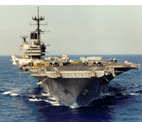CV60
Posts: 992
Joined: 10/1/2012
Status: offline

|
Q3 1961
Expenditures/Budget(Current Funds/Expenditures/Quarterly Balance)
$17,793.1 $6,087.8 $3,912.2
Actions
Launch manned suborbital Vostok
Events
Successful suborbital Vostok mission
Analysis
Under the house rule, the successful completion of the Zenit/Vostok missions now allows for the continuation of the manned Vostok flight program. The house rules also require that I fully man the Luna 3 development until it reaches maximum reliability, or it is flown. This give me an incentive to fly the Luna 3 mission and free up some of my research personnel. However, I’m concerned about the NASA program, so I want to get a man into space immediately. While my plan was to duplicate Gagarin’s flight, skipping a suborbital flight and go straight to a manned orbital mission. However, this is very risky, with a 20% reliability penalty associated with this strategy. Because of the inexperience of the mission control personnel, and my earlier Zenit failure, I opt for the safer, but more expensive and time-consuming strategy of launching a manned suborbital mission. Of note, the game’s “Buzzopedia” notes that the USSR historically skipped the manned suborbital flight, because unlike the Mercury capsule, the Vostok was highly automated, so a Vostok manned suborbital mission was not as crucial.

 Attachment (1) Attachment (1)
|
 Printable Version
Printable Version


























 New Messages
New Messages No New Messages
No New Messages Hot Topic w/ New Messages
Hot Topic w/ New Messages Hot Topic w/o New Messages
Hot Topic w/o New Messages Locked w/ New Messages
Locked w/ New Messages Locked w/o New Messages
Locked w/o New Messages Post New Thread
Post New Thread